AMD + ITX + TB3? It's the ASRock X570 Phantom Gaming-ITX/TB3 Motherboard Review
by Gavin Bonshor on October 9, 2019 12:00 PM ESTBIOS
ASRock's firmware is generally consistent with its GUI across its motherboard range and the ASRock X570 Phantom Gaming-ITX/TB3. The X570 Phantom Gaming-ITX/TB3 is using its Phantom Gaming firmware which includes a primarily black background with red gaming themed accents, with white text and grey highlights. Rather than splitting the firmware into two main sections, the firmware on this model has one primary mode. Everything in relation to overclocking, even minor tweaks can be found within the OC Tweaker section.
Upon entering the BIOS for the first time, users will land on the Main section. This is a very minimalistic area which displays very basic information including the version of the firmware that is installed, information on the processor, and the capacity of the memory installed.
All of the boards overclocking related settings are handily located within the OC Tweaker menu. Users can overclock both the processor and memory with a whole range of tweakable and customizable options available. This includes settings like CPU Core Frequency, CPU VCore voltage, and the boards five different LLC profiles. For users looking to make more tweaks to memory rather than just enabling the X.M.P profile, the DRAM Timing Configuration menu allows users to make adjustments to primary, secondary, and tertiary latency timings. Below is a list of limitations when using the current firmware for settings such as CPU VCore, CPU frequency, DRAM frequency, and the Infinity Fabric/FCLK frequency. It should be noted that most of these maximum values won't even be able to be reached, even with extreme cooling methods:
- Maximum CPU Frequency = 6.375 GHz
- Maximum CPU VCore = 2.5 V
- Maximum DRAM Frequency = DDR4-6000
- Maximum Infinity Fabric/FCLK Frequency = 3000 MHz
The ASRock X570 Phantom Gaming-ITX/TB3 has just three 4-pin headers with one for a CPU fan, one for a CPU/Water pump, and for installation of a single chassis fan. As a result, the firmware hasn't got the usual FAN-Tastic tuning utility which we are used to seeing. Instead, users can moderately customize profiles within the H/W Monitor section with temperature and percentage variables. For better control, the ASRock Phantom Gaming utility which comes in the board's software bundle offers fan curve customization.
ASRock has opted to use a very archaic method of customizing its onboard RGB LEDs on the X570 Phantom Gaming-ITX/TB3. Going backwards on the firmware GUI, users can select between 13 different lighting modes, or turn them off completely. Again the software bundle comes to the rescue again with its ASRock Polychrome RGB utility.
I find it difficult saying this but firmware on the ASRock X570 Phantom Gaming-ITX/TB3 is impressive in some areas and completely lacklustre in others. Where we are used to seeing the decent FAN-Tastic fan tuning utility and a somewhat better method of controlling RGB LEDs within the firmware, we feel ASRock hasn't delivered in these areas. For overclockers, there are plenty of options and customizations which go far beyond current capabilities of current processors, and the settings for fine-tuning memory are on point. The only caveat really is for the more novice users looking to make quick and easy alterations, which the X570 Phantom Gaming-ITX/TB3 isn't catered for.
Software
Moving onto the software bundle supplied with the ASRock X570 Phantom Gaming-ITX/TB3, and it's pretty standard to what we've seen from other ASRock motherboards. The highlight of the software is ASRock's Phantom Gaming Utility, while the Live Update and App Shop software is also useful to have. Despite the lack of adequate RGB LED customization within the firmware, the ASRock Polychrome RGB software takes care of that.
ASRock’s Phantom Gaming Tuning software is consistent throughout its range of Phantom Gaming branded models, including across its AMD and Intel chipsets. The only differences from the Intel and AMD sides are the settings available. Users can use Phantom Gaming Tuning to overclock within Windows and tweak settings such as CPU VCore, CPU ratio, CPU cache ratio, and DRAM voltage. One thing users cannot do is customize the memory frequency which will have to be done in the BIOS.
Despite having three 4-pin fan headers available, the ASRock Phantom Gaming Tuning software includes the FAN-Tastic utility within. Users can customize based on fan curves, or with preset profiles such as full-speed, or even allow the software to tune the fans based on current temperatures.
Users can customize the integrated RGB LED strip at the bottom of the board or strips installed into the two headers via the ASRock Polychrome Sync software. The GUI is very user-friendly and ASRock allows you select different types of lighting effects including static, random, wave, and rainbow; there are fourteen different modes not including the ability to switch the RGB LEDs off altogether.
The ASRock App Shop is awash with unsavoury looking gambling apps which have been a mainstay since they released this application, but as it's been combined with the Live Update application too, it does serve a good purpose. Users can download and update the ASRock software applications, as well as keep important drivers up-to-date, as well as update the firmware to the latest version without having to use the tool within the firmware.
Like we have found with the majority of motherboards recently tested, vendors haven't included adequate audio software in with the bundle, or made readily available from the official product pages. The marketing materials for the ASRock X570 Phantom Gaming-ITX/TB3 mentions that it's supported with Creative Sound Blaster Cinema 5, but even adding a simple link for users to download this would make the overall experience better. The software bundled with the board is actually more than some users will need.



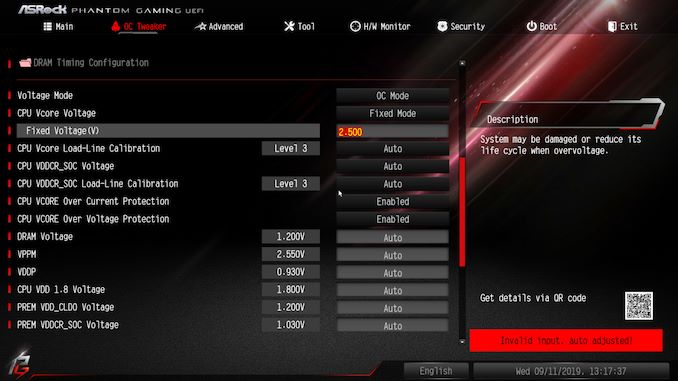
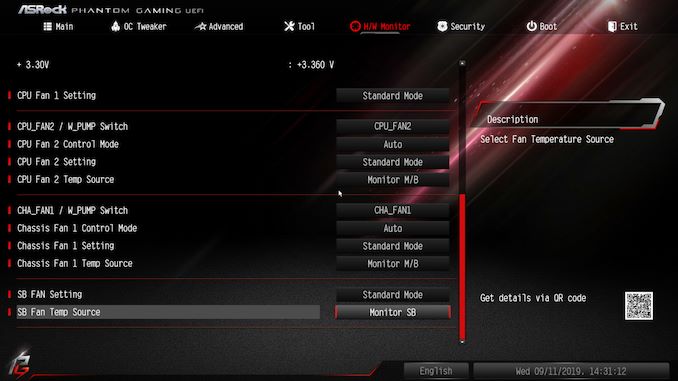
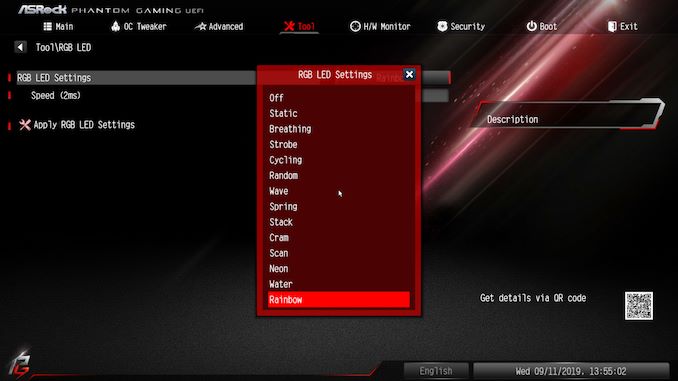






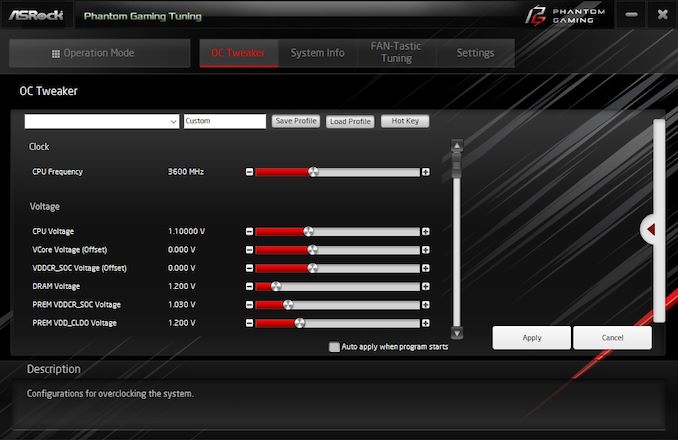
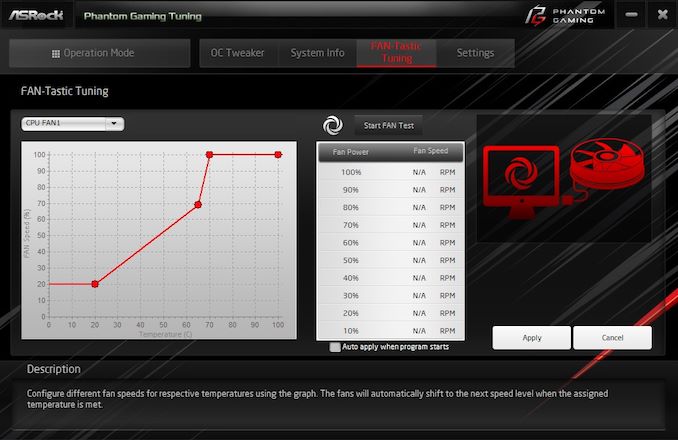

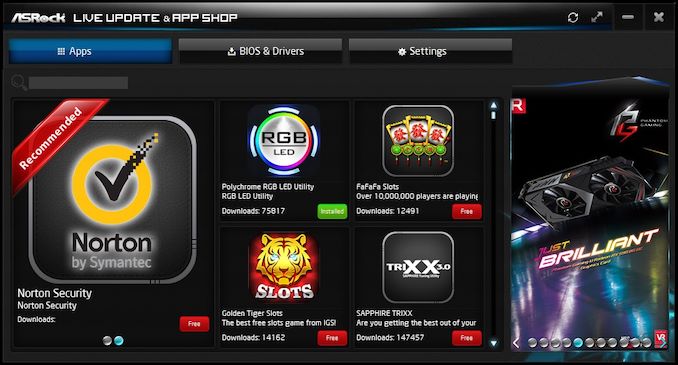














64 Comments
View All Comments
drexnx - Wednesday, October 9, 2019 - link
even before I knew it was a blink 182 reference, I still read it as "all the...small things"Tuxie - Wednesday, October 9, 2019 - link
I'm still waiting for a Mini-ITX board with AM4, 2x M.2 and 10GbE. No need for WiFi, SATA, TB or onboard DP/HDMI.jeremyshaw - Wednesday, October 9, 2019 - link
The last part is what kills this board for me. It wastes space on DP and HDMI (technically, just HDMI, since the DP is an input for the TB3), when it already has a TB3/USB-C connection to handle video output. If someone insists on using a $220 board for a 3400G (and I am being extremely generous here), let them fall on their own sword. Let them spend the extra $20-30 on a DP-->HDMI adapter. Don't waste precious space on this board with a HDMI connector.Even worse, the Intel version of this board has all of the same outputs, PLUS two more USB ports and another M.2 slot. So no matter how I slice it, this board is down on features vs existing ASRock boards. From what I understand, ASRock didn't link the M.2 slot to the extra 4 PCIe lanes from the CPU, either, so it's sharing bandwidth from the chipset (with LAN & TB3), just like the Intel board. What a waste.
umano - Friday, October 11, 2019 - link
I totally agree, let's hope in the futureFiveOhFour - Saturday, January 11, 2020 - link
i agree but the hdmi part isn't fair it makes sense given how common this form factor is for use as a home theatre pcFiveOhFour - Saturday, January 11, 2020 - link
thats a major dissapointment though for sure, so whats the best option for x570 boards with thunderbolt, aside from the $1,000 white one. I don't need a certain form factor, though it would've been nice, just the best/most features and quality and priceValantar - Wednesday, October 9, 2019 - link
They're not going to make a premium ITX board without WiFi - too risky in terms of lost sales. A lot of SFF PC users move their PCs around, and not all places have Ethernet available. Also, ditching SATA seems early - people have legacy devices still (though cutting it down to 2 SATA probably wouldn't be a deal breaker for many). Likely all of this could be fit on board if they went with some sort of stacked m.2 layout like the Gigabyte or the Strix.Beyond that, I agree on faster networking though. Even one of those Realtek 2.5GB controllers would be a huge (well, 2.5x) improvement. Fitting a 10GbE controller might be too tight of a fit, sadly. But maybe on a daughterboard/some sort of vertical m.2 board like WiFi controllers?
DanNeely - Wednesday, October 9, 2019 - link
I doubt we'll see many 2 sata boards anytime soon; but the total is dropping and starting to shift downward. Looking at newegg listings, and limiting AMD to x70 boards since the remainder of the 5xx series isn't out yet:x370 3x 4 ports, 29x 6 ports, 76x 8 ports, 2x 10 ports.
x470 21x 4 ports, 147x 6 ports, 19x 8 ports
x570 36x 4 ports, 181x 6 ports, 83x 8 ports.
10 ports has disappeared as an option. 4 ports has grown from 3 to 11% of the total, and despite bouncing back a bit this year 8 port models are a minority of designs now vs the default in x370 boards.
On the intel side, and sticking to Z series boards to stay with the same general market segment as AMD:
Z170: 3x 2 port boards, 20x 4 port, 68x 6 ports, 8x 8 ports.
Z270: 9x 4 port, 74x 6 port, 19x 8 ports.
Z370: 43x 4 port, 129x 6 port, 1x 8 port
Z390: 66x 4 port, 476x 6 port, 18x 8 port.
Similar trends overall; 8 port is much less common on Intel boards because their consumer chipsets only have 6 sata ports available; 8+ requires a 3rd party controller and has been much less common for years as a result.
With both brands I suspect the transition will be slow because consumer boards suffer from feature checkboxitis and the connectors are cheap. Reducing support on the chipset would push things faster but sata controllers are relatively small/cheap compared to top of the line USB/PCIe ones and both companies are doing variations of the flexible IO port thing so it doesn't cost them much either. It'll happen eventually, but I don't expect to see much movement until the price/GB gap narrows at lot between SSD and HDDs because of people wanting to make DIY NAS/Storage servers.
Heavenly71 - Wednesday, October 9, 2019 - link
Sadly this board severly lacks USB ports. And it also doesn't have an internal header for front panel USB-C.imaheadcase - Wednesday, October 9, 2019 - link
That isn't really a issue considering all the options you can add usb to a system now-a-days.